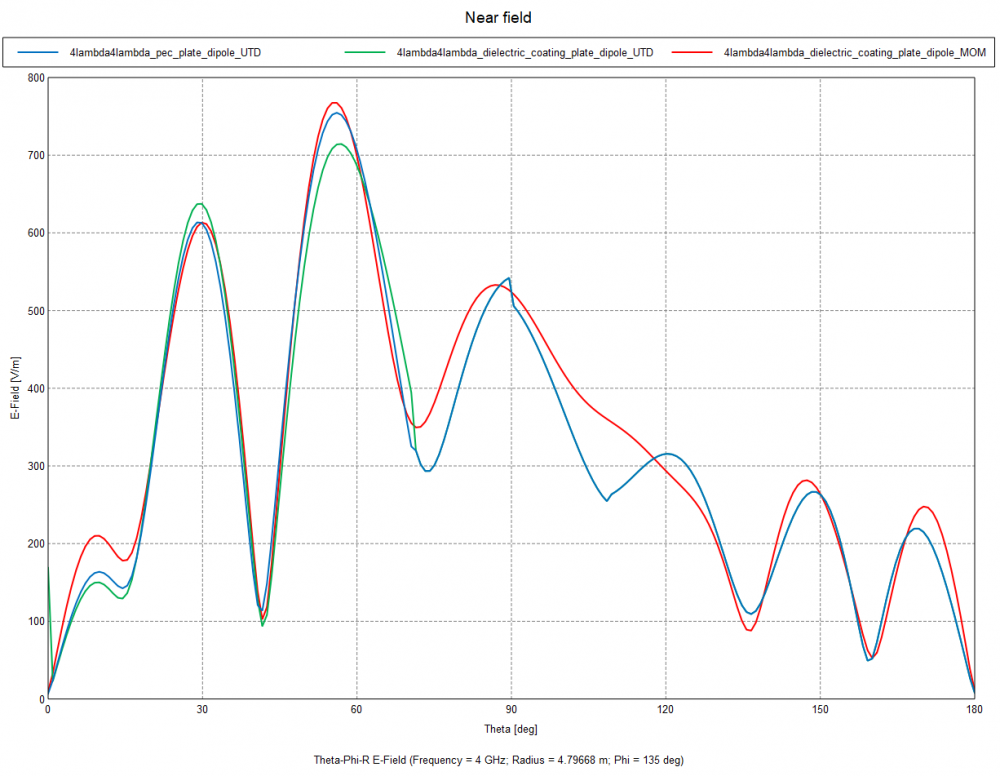I applied dielectric coating to PEC plate and computed nearfield results using UTD and MoM. Thickness of the layered dielectric was set to be lambda/200. Result obtained by UTD for observation points in spherical coordinates with theta>70 deg looks identical to result obtained from a PEC plate. I have attached the result figure and feko model files. Can you please comment on the result.
<?xml version="1.0" encoding="UTF-8"?>
Unable to find an attachment - read this blog